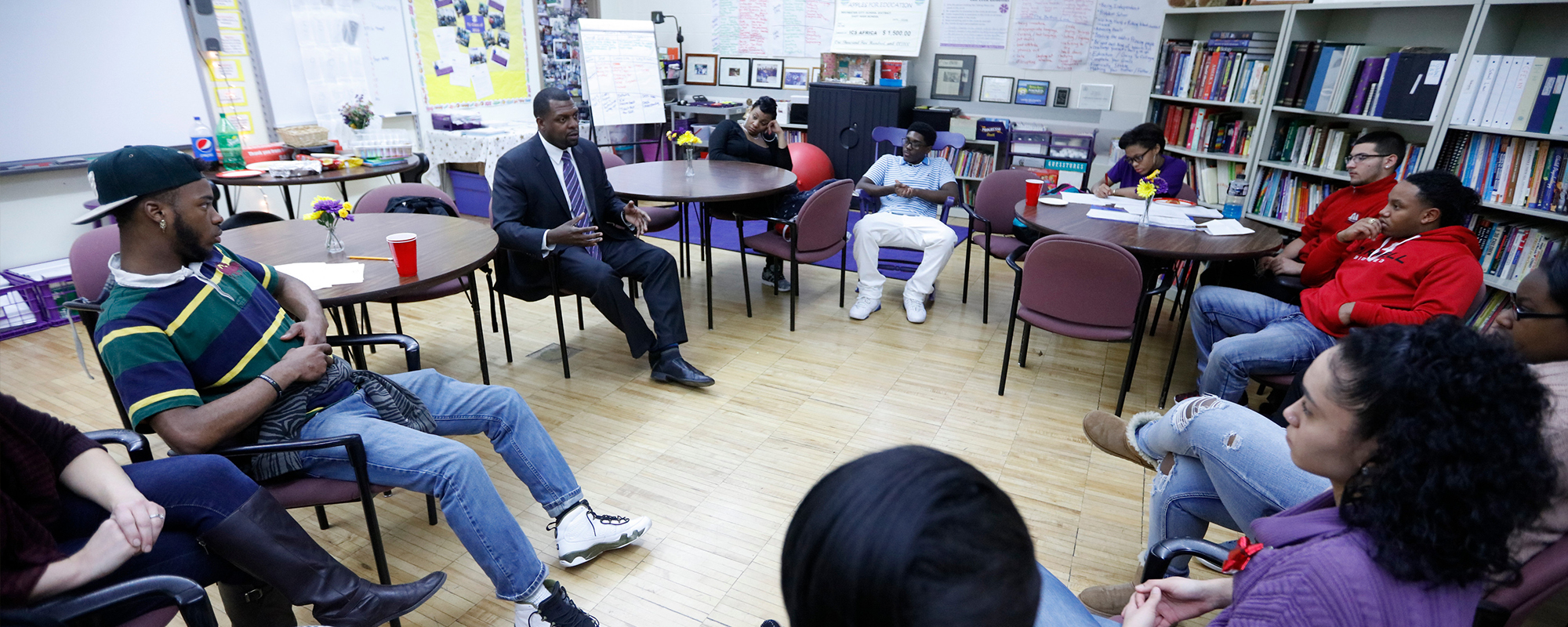
Equitable Curriculum & Instruction
Open Sourced, Culturally Responsive-Sustaining Curriculum & Instruction
Guided by theories of Culturally Responsive-Sustaining Education (Paris & Alim, 2014), Understanding by Design (Wiggins & McTighe, 2005), and learning standards (New York State Education Department, 2017), we’ve developed resources which give teachers and curriculum designers tools to create and implement learning experiences that are rigorous and inclusive of all students.
East High’s Elevated Educator website provides access to unit plans that are culturally sustaining for students of color.
Watch video introduction to the website.
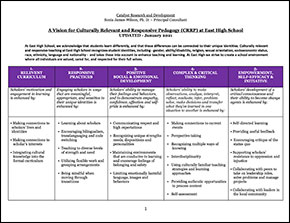 This Visioning Document is an example of how a school can use a rubric to guide and evaluate culturally relevant-responsive-sustaining (CRRS) curricula and instruction. At East High (Rochester, NY), it is used to provide clear, specific descriptions and examples of five core elements of CRRS pedagogy in practice.
This Visioning Document is an example of how a school can use a rubric to guide and evaluate culturally relevant-responsive-sustaining (CRRS) curricula and instruction. At East High (Rochester, NY), it is used to provide clear, specific descriptions and examples of five core elements of CRRS pedagogy in practice.
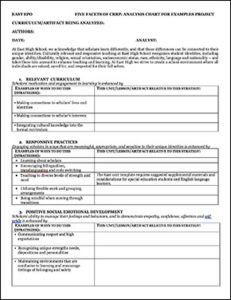 This companion document, a CRRS Analysis Chart, can be used as a template to give feedback to teachers about the ways in which their work might be considered CRRS.
This companion document, a CRRS Analysis Chart, can be used as a template to give feedback to teachers about the ways in which their work might be considered CRRS.
Antiracist Curriculum Development
In the wake of a summer of violence (2020) against unarmed Black men, CUES Director Dr. Shaun Nelms is leading a regional effort to make systemic changes in educational policies and to create an Antiracist Curriculum to help students learn about and discuss Rochester’s issues with racism and injustice.
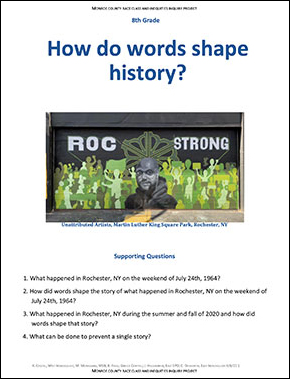 ‘Words Matter’ sample unit from the curriculum: ‘Words Matter’: 8th grade history
‘Words Matter’ sample unit from the curriculum: ‘Words Matter’: 8th grade history
The following school districts (all in New York State) have committed to developing, training teachers, and implementing the curriculum in their U.S. History classes:
Monroe BOCES 1 • Monroe BOCES 2 • Greece • West Irondequoit • RCSD • East Irondequoit • Spencerport • Rush Henrietta • Brockport • Fairport • Gates-Chili • HFL • Pittsford • East Rochester • Kendall • Penfield • Hilton • Wheatland-Chili • Churchville-Chili • Brighton • Holley
Watch:
“Preventing Inaccurate Lessons in Schools Like Slavery Worksheet” on Spectrum News
“Local Educators Push for Anti-Racist Curriculum After ‘Insensitive’ Slavery Worksheet ” on WROC News
“East High EPO Superintendent Nelms Influencing Educational Reform” on Spectrum News
“Anti-racism curriculum to be implemented in school districts across Monroe County” on WHAM News
“Anti-racist curriculum to be incorporated in history classes in all Monroe County schools” on WROC News
Read:
“How COVID-19 will make fixing America’s worst performing schools even harder,” in EducationWeek
“Embracing and celebrating equity and diversity in East’s classrooms” in The Warner Word
“Across Monroe County, students will soon have anti-racist lessons” on WXXI News and in City Newspaper
Additional Resources
Becoming High Academic Achievers: What are the Supporting Factors for African American/Black Male Students that Make the Difference by Cassondra Corbin-Thaddies, PhD
Instructional Resources
The provision of the highest possible quality of instruction to all students is at the heart of equitable education. We work with schools to drive this curricular and instructional transformation. The tools below are research-supported and feature their application at East High. They can also be used as templates at other schools.
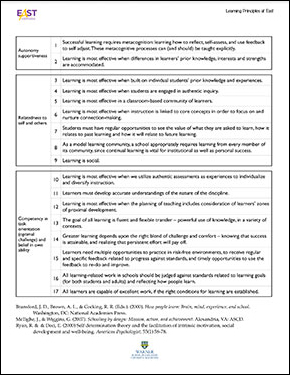 This Learning Principles Template helps school leaders and personnel align their school’s philosophy of learning with evidence. Once completed, it undergirds the use of other tools (below).
This Learning Principles Template helps school leaders and personnel align their school’s philosophy of learning with evidence. Once completed, it undergirds the use of other tools (below).
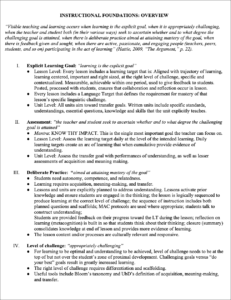 Derived from the work of John Hattie (2009), the Instructional Foundations Overview Tool is a tool for designing, delivering, and evaluating high quality instruction.
Derived from the work of John Hattie (2009), the Instructional Foundations Overview Tool is a tool for designing, delivering, and evaluating high quality instruction.
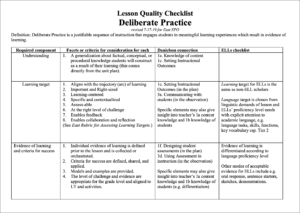 Teachers and leaders can use the Lesson Quality Checklist to evaluate their work and give themselves feedback. The framework describes critical elements in lesson design.
Teachers and leaders can use the Lesson Quality Checklist to evaluate their work and give themselves feedback. The framework describes critical elements in lesson design.
Mission-Aligned Curriculum
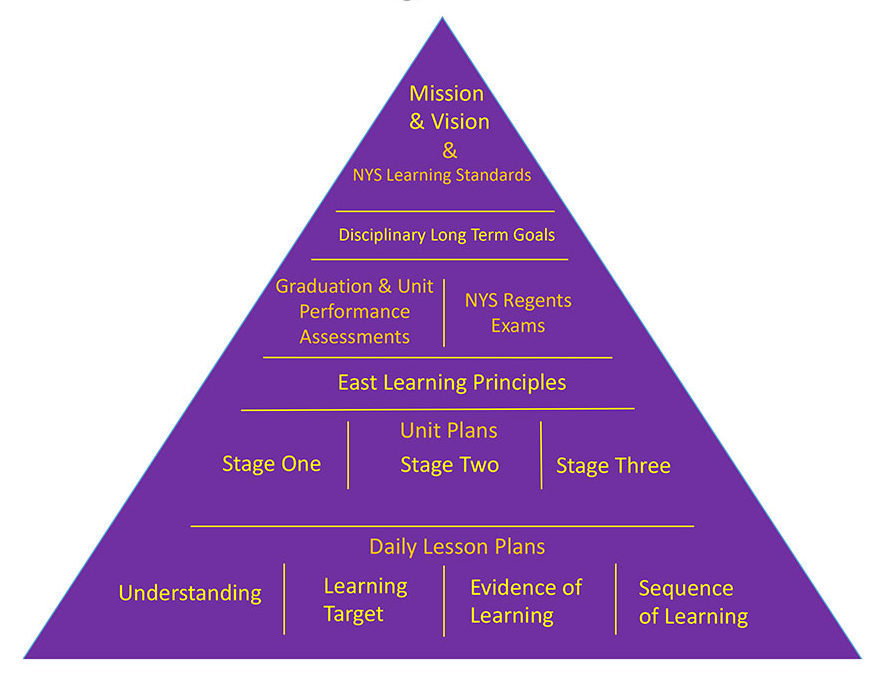
This model builds on the Understanding by Design (Wiggins & McTighe) curriculum model. We innovated the bottom row as a conceptualization of how ‘daily lesson plans’ fit into curriculum. Using this model, each content area contributes to a wide variety of learning experiences that aggregate to ensure that a school’s community achieves its mission.
Publications
Standards-Based Grading: History, Practices, Benefits, Challenges, and Next Steps by Valerie L. Marsh (2023). This brief explores research that: reviews the historical context of grading, defines Standards-Based Grading (SBG), examines the practices, benefits, and challenges of SBG, and recommends the next steps for educators considering a transition to SBG.
Fighting inequities of design: A conversation with Shaun Nelms by Valerie L. Marsh (2022). This conversation provides insights from Dr. Shaun Nelms’s history, his perspective on school transformation and education research, and his comments about the most recent initiative of CUES, which is to create an antiracist curriculum for their region of New York State.
Doing and Being Hip-Hop in School: Best.Class.Ever. By Larson J., Atkins, G., & Duret, E. (2022, October). This book explores how how urban youth and their teachers (Larson as co-teacher) design and implement a student led class on Hip Hop.
Disrupting Segregated Knowledge Flows: Reflections from an Evolving Abolitionist by Valerie L. Marsh (2022). In this publication the author recalls an experience of her own racism as a white literacy researcher and ELA educator. She acknowledges and describes her racism as both a means to redesign teaching practice and an invitation to other ELA educators to allow the discomfort that can come with reflection.
Unbound potential: identity as a process understood through creative writing by New Writing (2022). The purpose of this study is to better understand how high school students engage creatively with their own identity and then communicate such engagement through creative writing.
2022 Greater Rochester Antiracist Education Conference Report by Nahoko Kawakyu O’Connor. A collaboration with all area Schools of Education, the Antiracist Curriculum Project, and Center for Urban Education Success the conference brought together teachers, administrators, parents, students, community members and education advocates to learn from one another.
Challenging the Autonomous Wall: Literacy Work in an Urban High School by Joanne Larson, Eleni Duret, Jennifer Rees, & Jessica Anderson for the Journal of Literacy Research (2021). This article explores how one urban high school under threat of state closure developed a multifaceted literacy program to transform the teaching and learning of literacy in a novel university/school partnership.
Sarcasm as Pedagogy of Love: Exploring Ironic Speech Acts in an Urban High School English Classroom by Joanne Larson, Timothy Morris, and Kristen Shaw for the Journal of Adolescent & Adult Literacy (2019). This article explores how two urban high school teachers build a trusting community through sarcasm.
Videos from Curriculum Work at East High School
When East High and the University of Rochester began their partnership in 2015, a major aspect of the transformation plan was to redesign curricula in every department, at every level.
By utilizing research, professional learning focused on curriculum writing, the Understanding by Design (UbD) framework, and a model led by teachers working as coaches, East High (Rochester, NY) spent several years writing, implementing, reflecting, and revising curricula that puts students at the center of learning while also increasing rigor. In this video, East administrators, teachers and scholars as they share their invaluable insights and experiences. Additionally, you’ll witness innovative teaching methods in action as East educators implement the newly crafted curricula in the classroom.
In the earlier years of the East EPO, East teachers, coaches, and East’s Chief Academic Officer described their curriculum development process and candidly reflected on the experience.
East teachers are creating instructional units that culminate in presentations of student work – at school, after school, and in the local community. In this video, East’s Chief Academic Officer explains the purpose behind and student response to these performance tasks, which are working their way into curriculum across disciplines at East.
